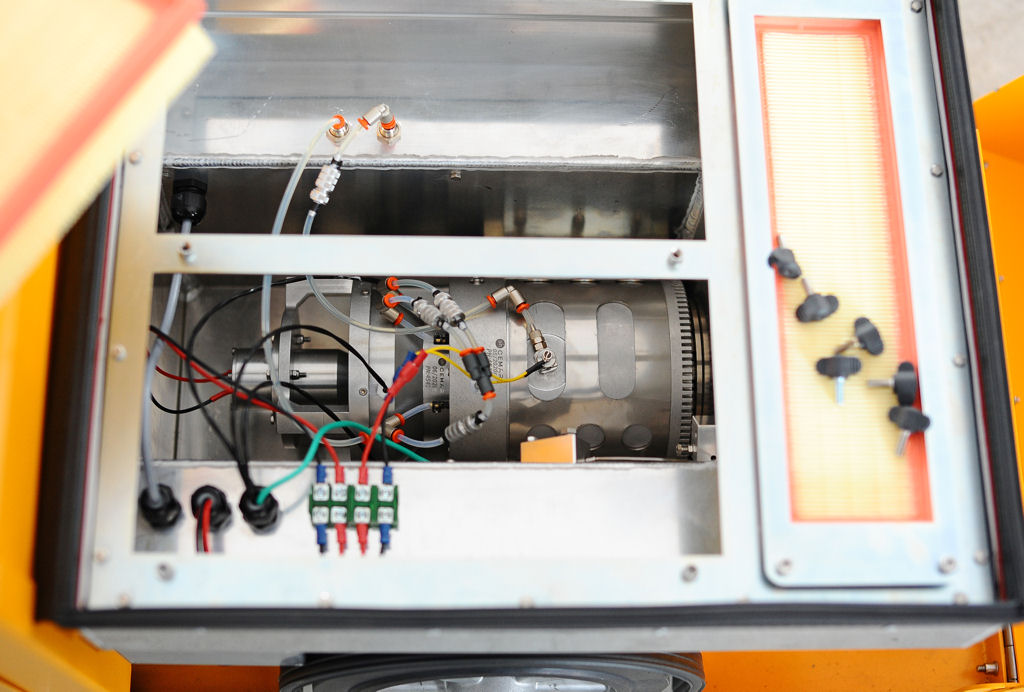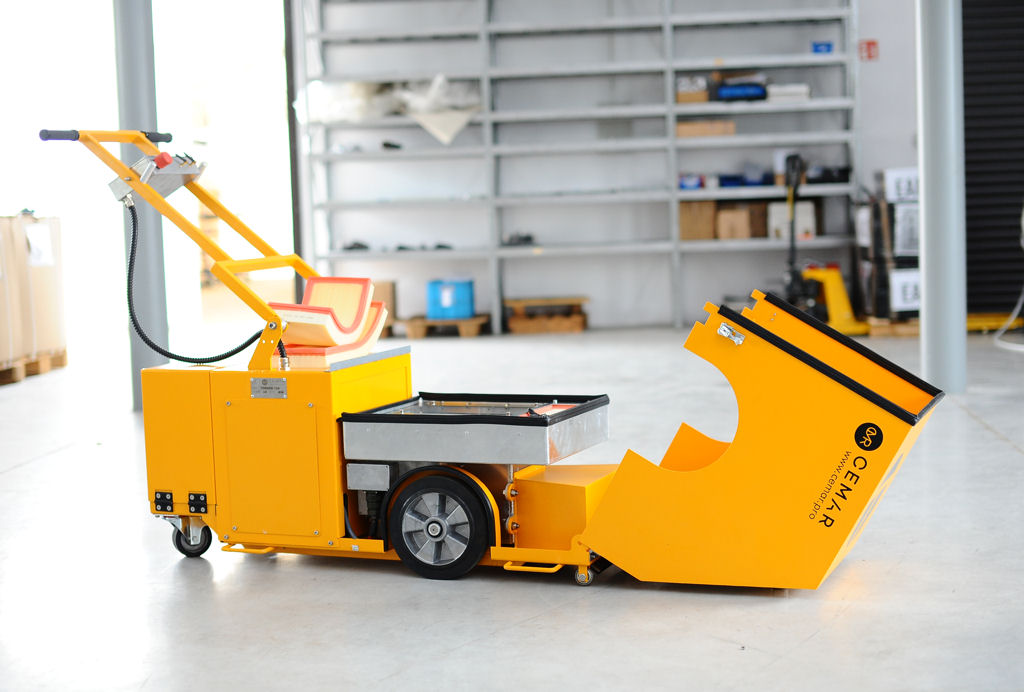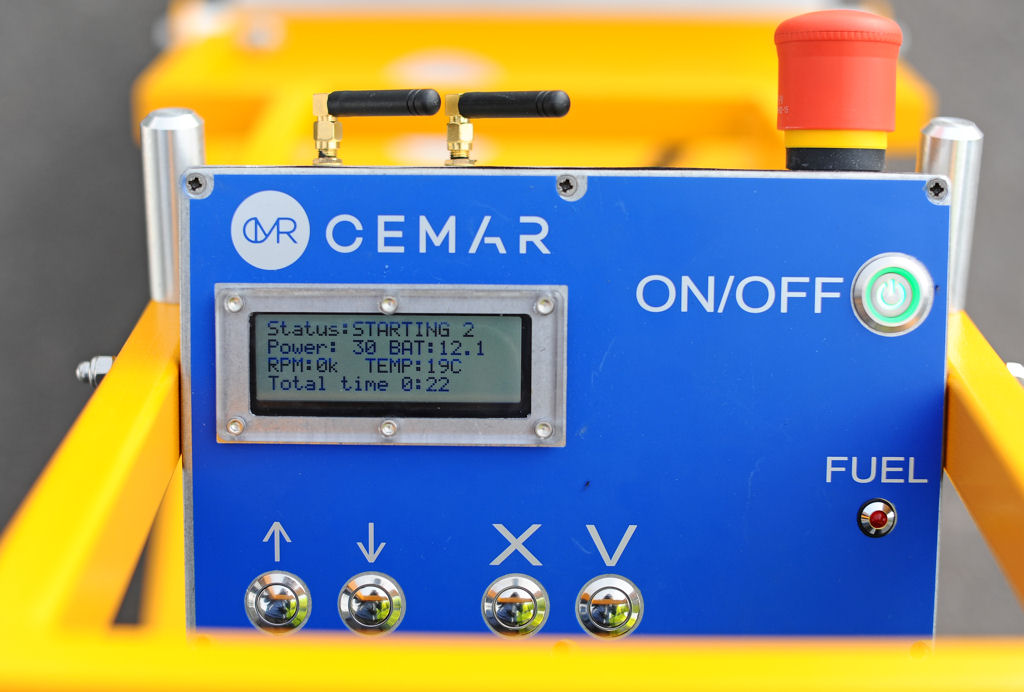The dryer Torgos uses huge quantities of hot air under high pressure. The dryer produces 80 m3 of hot air per minute. The air is very hot, it’s even 600 oC, but it’s flowing very fast so the road surface is warmed only to 40-50 oC. Because of the huge amount of air, Torgos dryer cleans the surface so well. The efficiency of drying is very high, incomparable with other dryers on the market.

TURBINE
This huge hot blast is produced by the turbine engine. It is a mini version of jet engine used in aviation. The turbine engine works with speed of 80 000 rpm. This is more than 1000 rotations per second ! To ensure the durability and quality of engine, we manufacture it by ourselves. To produce the turbine we use special materials like Inconell (used in aviation and cosmonautics), that’s why the turbine is very durable in spite of high temperatures and rotations.
GPS and GSM
Very high temperatures and rotations means that the dryer is very sensitive machine. That’s why we use a lot of monitoring systems on the machine. Key information are send to the machine operator and cloud service point through GSM system. I this way if any problem appear the operator and service know it immediately. Service point can even predict breakdown before it actually happens. The software includes an intelligent self-learning system which monitors the work of bearings. The system can predict the breakdown of bearings before it happen.
Second of the system, the GPS tracks the location of machine and send the data in the cloud to the web system.
WEB SYSTEM Troad.info
It is dedicated Web portal for users of Torgos road dryer machines. Through this page an owner can track the location of his machine, quantity of worked hours, any errors on machine, service history and other data. The serviceman can also check the operation of machines, inspect for any errors or even to rep air the machine through Internet.
SALT REMOVING SYSTEM
It is just a tank with water and a special nozzle in the flow of air. The air is sucking the water and direct it to the road surface. Next the water with salt is removed from the surface, leaving it dry, clean and free of salt.




